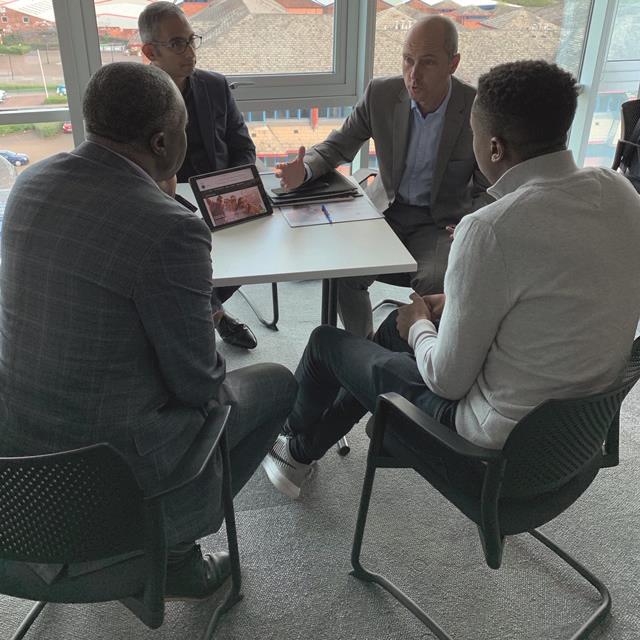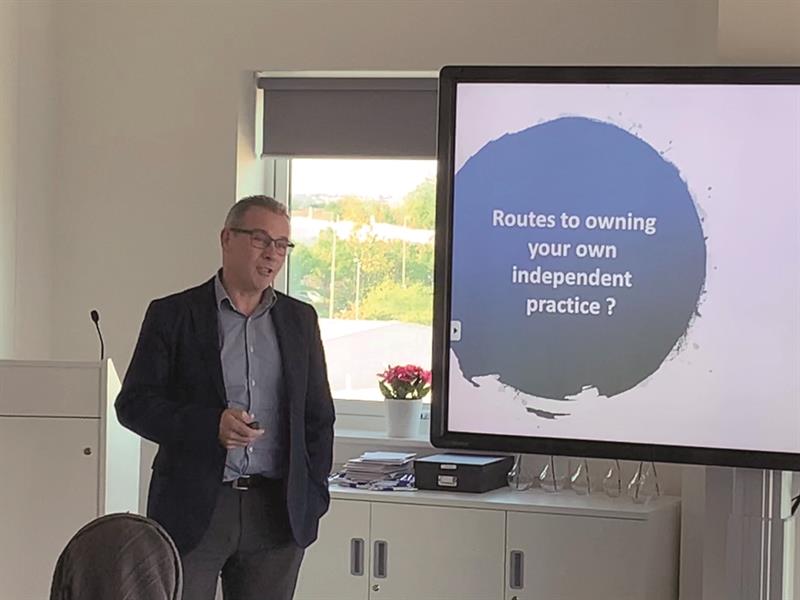‘Where do I start?’ neatly sums up the sentiment among the nascent independent opticians attending the Association of British Dispensing Opticians (ABDO) event ‘Become an Independent Optician’ in Birmingham last week.
On a glorious summer evening, ABDO’s National Resource Centre laid out a sun-drenched vista of the UK’s second city as a succession of speakers laid the world of optics at the feet of delegates. Most of the young professionals in attendance had set their heart on owning and running their own practice. They wanted to know how to go about it and the groundwork needed to turn that desire into bricks and mortar.
One thing all of the speakers, organisers and delegates agreed on was that there is no off the peg approach to becoming and independent. Every practice is different as is every practitioners’ idea of the practice they want to run and the way they want to run it. Many different routes to ownership are possible but the overriding message from the event was planning, engagement and communication. The good news is that along with ABDO, Sight Care, the National Eyecare Group, Specs Network and Eye Plan are all eager to engage with the next generation to help their plans come to fruition. They were at the event supporting ABDO’s call and offering their support and experience to the wannabe independents.
The evening took an interactive approach with the organisations explaining what they offered to support independents, some networking time and then sessions for more detailed discussions.
The Association of Independent Opticians’ (AIO) Mike Ockenden said becoming an independent optician can be a daunting prospect but he implored anyone thinking of taking the plunge to get in contact. He said there are some basic pitfalls which are easily avoided. Travelling around the country, he saw streets with three new practices and thought: ‘I wish they had come to us first.’
Ockenden took the first presentation slot and outlined his organisation’s work and that of the Practice Support Network. The Network was born out of a realisation six years ago that if the AIO did not do something to encourage new independents it would not have any members in a few years’ time. It brought together the bodies looking to help independents under a single umbrella.
The Practice Support Network was created by the AIO out of the desire of young professionals to become independents and to send out the message that it is possible. ‘Are the hurdles as high as people presume them to be?’ asked Ockenden. He also stresses that the whole of the supply sector is keen to see a thriving independent community and are keen to help. With so much desire to support independents the AIO wanted to offer some tangible help. ‘How can we dovetail and bring wannabe independents together with the supply chain with a practical, handholding approach,’ asked Ockenden. The result was the Practice Support Network.
 Potential new independents talk to the Specs Network
Potential new independents talk to the Specs Network
Sight Care has its own support plans for independents and its chief executive, John French, painted a grimly realistic picture of the independent sector which has shrunk from 40% of the industry by value 10 years ago to 20% by value today. Local councils, competition from the multiples and lower footfall all make for a tough environment. Entering such a market is a big challenge, he says, but there are plenty of success stories.
Looking with his experience from outside of the optical sector, he said that making a success of optical practice means focusing 80% of your time on business and 20% on the clinical side. Entrants need to differentiate themselves from the multiples, invest in equipment and offer outstanding customer service. It is not for everyone. He suggested only one in 10 dispensing opticians and optometrists were cut out for life as an independent. ‘Ask yourself, are you an entrepreneur? Running an independent is about passion and drive, not clinical ability. Most successful opticians tend to be run by dispensing opticians, I think that’s because they are more front of practice,’ he said.
SightCare offers everything for running a practice from access to products, training and advice and is working with the business development company Storm to help would be independents with support such as mentoring. The most important thing to do is engage, open up and talk frankly, he said.
Telling a practical story of independent life, Clive Marchant, president of ABDO, recounted the history of his business, Colin Lee Opticians. He charted the highs and lows of the business over 40 years, giving tips along the way about advertising, marketing staffing, choosing practice locations and diversification within the practice.
Behavioural optometry has been a niche independent John Stevenson has successfully grown into. He bought a practice 11 years ago and has gradually built up the patient base and his specialism. He explained how owning and running the practice allowed him to spend more time with patients and do things the way he wanted to do them. It has also allowed him to travel the world developing his interest in behavioural optometry.
Storm’s David Samuel spoke from experience of practice ownership as a DO, and gave an excellent overview of the routes to being an independent. This covered buying an existing practice, management buy in, management buy out, starting from scratch, taking over a family business, a niche specialism or a hostile takeover.
 Storm’s David Samuel
Storm’s David Samuel
For those already working in an independent it may be that you could purchase the practice that employs you through a management buy out. This, suggested Samuel, certainly makes seeking finance easier as the business has a clear trading history to borrow against. Despite having set up practices from scratch, Samuel saw a start up as one of hardest routes to entry. ‘I take my hat off to anyone starting from scratch,’ he said.
Samuel’s talk was littered with pearls of wisdom for writing a business plan, seeking finance, marketing, financial projections and building accurate research and data. He also suggested joining a business network and seeking, then reacting to, honest feedback. He also provided the Confucian caution when opening a new business: ‘Whatever you are thinking, so are others.’
After the presentations, delegates had the opportunity to talk to each of the Network members one to one. National Eyecare Group operations director, Phil Mullins, said there is usually a delay of four to five years between someone thinking of becoming an independent and actually doing something about it. He said NEG has worked with people who wanted to start their own practice and while it does not have formal structures in place: ‘We can point you in the right direction.’
The AIO is also happy to be contacted by those looking to become an independent and may match up DOs with optometrists looking to start a business. It also offers mentoring. Ockenden repeated that Myers La Roche is a good place to start but stressed all members of the Network have different skills to bring with things like a business plan, choosing where to set up and support once up and running. ‘There’s no formal process but we know geographically where there are gaps,’ he added.
Similarly SightCare’s French said it does not have a formal approach because ‘everyone is different’, but ‘all of the information is out there within our membership’.
EyePlan’s Chris Clemence was on hand to describe how its payment plans could help with cashflow while Specs Network laid out its social media support. Clemence rounded off the meeting with a presentation on seeking finance and the most suitable trading structures to employ. All roads lead back to the business plan, he said, so re-write it, seek advice and re-write it again.
The simple desire to be able to practice in the way you want is strong among optical professionals and the Network wants them to know that becoming an independent is achievable. Among the delegates at the meeting were locums who had chosen that way of working for the freedom and wanted to maintain that while building a business.
Whether you are a returning mum, someone disenchanted with the joint venture model, an ambitious student or looking to take over when your boss retires and you want to become your own boss within an independent it is worth talking to the AIO.
